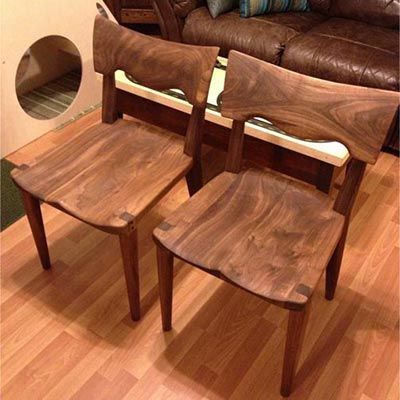
For this month's case study we got in touch with Andrew Coholic to discuss his first year using CNC technology and Vectric software.
In the article we find out more about Andrew's lifelong passion for woodworking, how it has led him to run his own business and ultimately how he was first introduced to CNC. Andrew then kindly shares more details about ten of his projects with us, showcasing his development over the past year.
"I was raised within the surroundings of my father's custom woodworking business, which meant that I started woodworking at a very young age. I remember making my own toys by the time I was 6 or 7 yrs old. By the time I was in my early teens my father had me helping him out full time in the summer months and then weekends throughout the rest of the year. I have been exposed to woodworking all my life!"
"Despite my familiarity within this field, I was only introduced to CNC technology when I enrolled at college (Conestoga College's Woodworking Centre, in Ontario Canada) between 1992 and 1995; I was in my early 20s then. At that time we were doing rudimentary 2D machining of sheet goods and some solid wood machining (using a Wadkin fixed head, moving table machine). I recall the process of creating the CAD drawings, converting them to GCode and manual debugging, etc. This was very time consuming and difficult to learn, however, the bug was set and I knew that someday I was going to incorporate this technology into my own business. "
"It was only about two years ago that I started seriously looking at purchasing a CNC router for my business, but at the time I was more concerned about the software as I knew the machine on its own was going to be of no use. I talked to other owners and salespeople about the type of work I wanted to do and what would suit me best in terms of software. In the end I was recommended to check out Vectric's Aspire software, which I did, and then went on to purchase it with the Shopbot BT48 Alpha router. I have used both of these products exclusively in the past year I have owned the machine."
"Vectric's Aspire software makes designing projects and generating toolpaths very simple for the work I need it for (a lot of 3D furniture parts and other wood components). Also, it is very easy to modify and manipulate the files to change parts as I am working. The more I use Aspire, the more I appreciate what it can do for me. I still have a lot to learn, but in the time I have been using the software I would say that more than 90% has been a productive, work generating effort. Without Aspire, I am sure I would not be able to create the complex 3D shapes I do as easily or as quickly."
Below you can see a selection of 10 of the projects Andrew has created with Aspire and his ShopBot during his first year. These are shown in chronological order and document how he has progressed using a combination of work projects and things for himself to help him learn how to get the most from the technology.
Child's Chair
This child's chair project was originally made for Andrews's son. After finishing the design, he went on to modify it further to suit infants, toddlers and little children. The chair was made from 12mm Baltic Birch and is assembled by pressing, and then sliding down the back and seat through the sides, no tools needed!
Few Signs
After getting his new machine, Andrew admitted that is was 'inevitable' that he was going to produce a few signs and went on to create a number of great samples. The sign to the left is made out of western red cedar and was created for a local customer. The piece measures 1" thick x 30" x 18" and boasts a Sikens Cetol finish. Andrew admits he is not a sign maker (yet), but he learnt a lot whilst working on these projects.
What pays the bills
Andrew goes on to tell us more about a project that he is used to doing on a day to day basis. This project involved the creation of built-in style cabinets along a 28ft wide x 9ft tall wall that boasted a fireplace centre. The professional result also includes LED lighting within the cabinets that are all connected to a remote dimmer/on-off, as well as 16 solid wood trays on self closing slides behind the doors.
What makes this job even more impressive is that Andrew built, finished, assembled and installed this project by himself within 3 weeks!
Back to chairs
Following on from Andrews's progress so far, he decided to return to chair making, altering an existing design to suit himself and his wife. He then extended this collection to 6 pieces to compliment a table he also made for a long standing customer of his.
Each chair took about 4 hours to create, a production time he has now managed to shorten to just 2 hours; one hour for cnc machining (30 minutes to shape the seat, 30 minutes for the remaining parts, including set up, cut time and bit changes). Due to this he can make more chairs per hour and sell the units at a lower cost. The finished pieces are made of solid birch and are stained and lacquered before being sold.
Reception desk and sign
Andrew's portfolio extended further when he created a reception desk and sign for a friend who was opening a new physiotherapy clinic where he lives.
This desk was made entirely from hard maple veneers and solids (tops, edging, drawers, etc solid with the gables 3/4 veneer) with a dark walnut stain.
The logo you can see on the front of the desk was scanned into Aspire which was then used to generated the toolpaths to cut out the design using ¾ MDF. It was then assembled using hot melt polyurethane.
Nameplates for Children's boxes
Following on from the reception desk project, Andrew was asked to give a demo about his workshop for his son's daycare. This involved 30 children between the ages of 4 and 8 years old visiting his workshop for 1 1/2 hours.
For the occasion, he decided to cut out parts for the children which they could then assemble into a small box and paint back at daycare. The front of each box had their name vcarved into it, and to help keep the assembly as simple as possible, Andrew made sure the bottom, sides and front/back are keyed together so no tools had to be used.
Slide
After receiving a Little Tykes plastic slide from a friend that was too big for his son to use, Andrew decided to make his own. Amazingly, it only took him an hour after arriving at his workshop to have the piece ready to bring home!
He designed the sides of the slide over breakfast and then went on to cut them out of ½" Baltic Bitch ply in 6 minutes. The steps and slide are set in 3/8". To finish the piece and add a bit of style, Andrew covered the slide in a layer of black post form grade Formica. The piece was assembled using Titebond III with Titebond HighPur to fillet the underside of the joints for strength.
Deciding what to do for Christmas was easy
After we released our Candy Duet free project of the month, Andrew created ten as gifts for his neighbours, friends and family. Five of the designs were cut from cherry and another 5 cut from walnut. He machined the pieces with an increased feed rate to the one recommended in the project tutorials to help finish the pieces faster.
Multi-seat bench
For his next project, Andrew wanted to create something that he could to display at a trade show. He wanted something 'rustic' and remembered that he picked up a nice cherry slab the previous year that he could use. The slab measured 2.5" thick, 10ft x 24" and now that it was completely dry, he decided to use it to create a bench. Andrew carved three seats into the seat slab which now measures 6' long, then hand carved and sanded the contours. To help bring out the grain and the colour of the cherry, Andrew finished the piece with clear Danish oil, and a satin catalyzed lacquer.
Dining room chairs
One of Andrew's most recent projects included further revisions to his already popular chair design. This time he has decided to make a set of 8 chairs to go along with another dining table he is making.
He sketched the layout of the new chair on paper and plywood to determine its proportions then went on to create the design in Aspire. The back is a complex curve, sweeping both side to side and top to bottom following the outer profiles and matching radius on the backside. After regularly tweaking the design, he settled on a final prototype that he will now take to his client for approval. Each unit takes approximately 5 hours to complete, this includes 1.5 hours of CNC time, and 3.5 hours finish shaping, assembly, sanding and finishing (one coat of oil and 4 coats of lacquer).
We have enjoyed watching Andrew's development over the past year and would like to thank him for taking the time to share his experience with us. We are eager to see what he will go on to produce in 2013 and beyond.
You can read more about Andrew's projects on the Vectric forum under posts created by the user 'ajcoholic'. He has also documented all his projects on the ShopBot forum in more detail.
Below are some images of a few more projects Andrew has created to help him learn the software and solve various needs around his home and business.


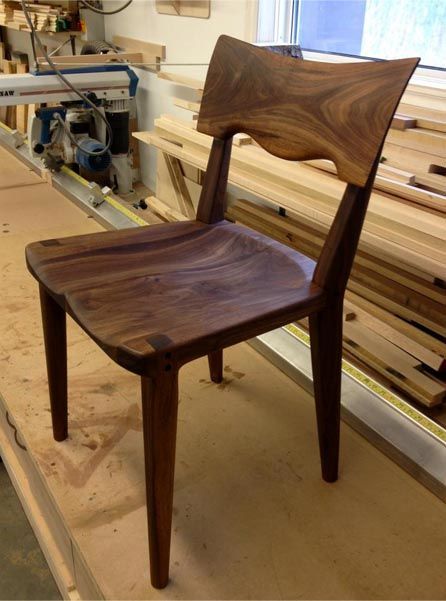
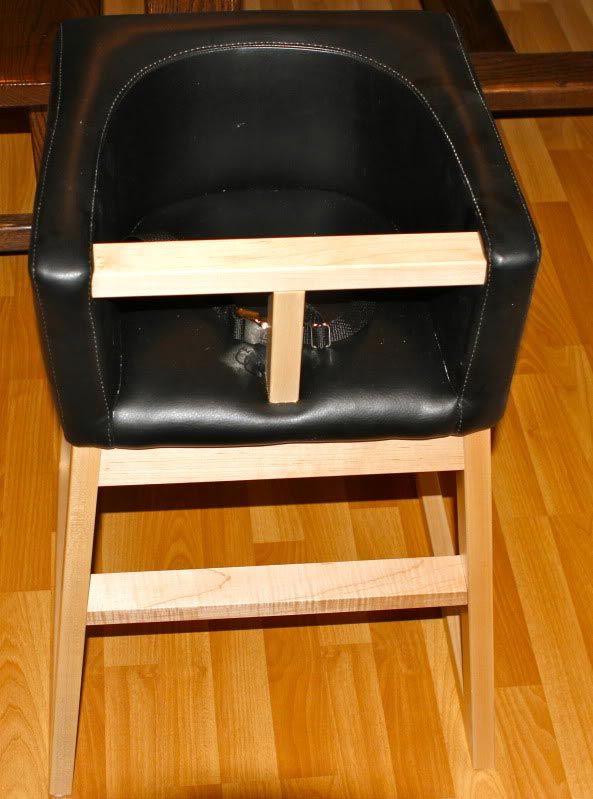
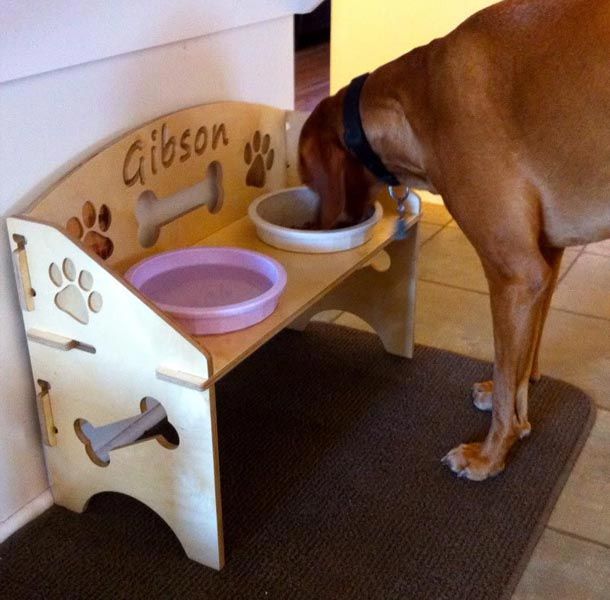
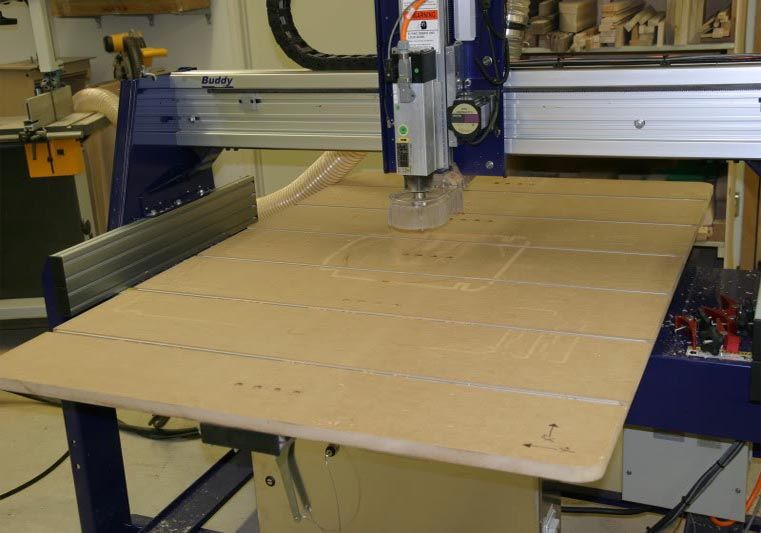



Vectric Ltd
Precision House
2 Arden Road
Alcester
B49 6HN
Registered in England Number 05382596
VAT Registration GB115123072
Privacy Policy |
Cookie Policy |
Terms and Conditions